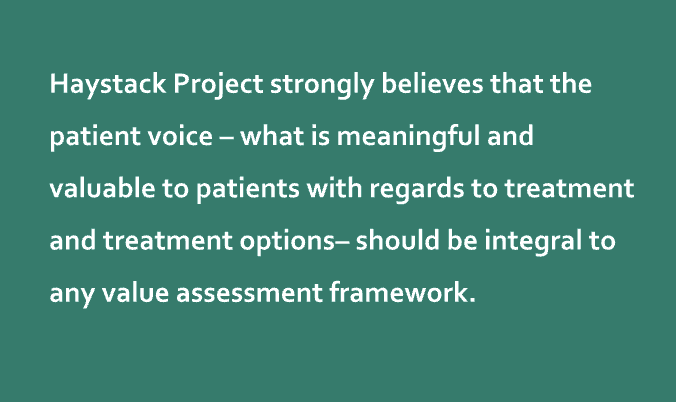Patient-Oriented Value (POV©) Report: Inserting the patient voice in value frameworks
Health care systems seeking to transition from volume-based care towards value-based care have accelerated the need to develop various methodologies for assessing and assigning “value” to medical therapies.
A POV© Report provides insight into the patient journey and disease burden from the patient perspective, and identifies patient priorities and perceptions of value for treatments, to enable patient preference inputs within the value frameworks used by key health care stakeholders to inform coverage criteria and formulary decisions.
Eyes on ICER
As the Institute for Clinical and Economic Review (ICER) evaluates clinical effectiveness and economic value of pharmaceuticals and other health care interventions in the U.S., it continues to seek increased input from impacted patients. However, ICER has struggled with incorporating that input into its economic models, and ends up relegating the patient perception of value to sidebar discussions of “other considerations,” rather than incorporating it into the numeric calculations of value that are meaningful and actionable. Given patient organizations’ expressions of frustration in describing their experience with ICER, and the increasing importance of “value” in determining access, Haystack Project is creating POV© Reports to help translate patient perspectives into quantifiable components of value that frameworks can use to guide health economic analyses and conclusions for rare and ultra-rare disease therapies.
Put simply, patient groups would like to translate their understanding of value into terms used by health economists and other health care stakeholders so that treatment value can be quantified utilizing the patient perspective.
Haystack Experience With ICER
Haystack Project has spent considerable time educating the 80+ rare patient groups that participate with us about value frameworks, their impact on patient access, and the inadequacy of models and evidentiary standards used by ICER for extremely rare conditions.
We have engaged with ICER personnel at numerous levels. ICER’s structure includes a stakeholder engagement function that has proven to be a valuable conduit for sharing insights, allowing ICER to have a better understanding of the unique needs of patients with extremely rare diseases.
Kay Scanlan, Senior Policy Advisor at the Haystack Project, has been named to the Midwest Comparative Effectiveness Public Advisory Council (Midwest CEPAC).
Haystack has also secured access to ICER’s Analytics and its modeling capabilities and joined its Fair Access Working Group.
Click here to review an example of POV that was completed for Choroideremia.








